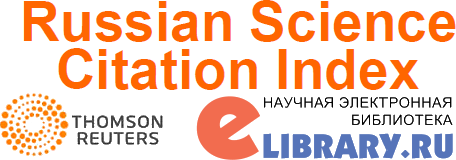Evaluation of the therapeutic effects of fonturacetam in the chronic unpredictable mild stress (CUMS) model in rats
Background: Chronic stress can lead to adverse consequences such as occupational burnout syndrome (OB). Considering the social significance of the disease and the lack of standard treatment, the development of pharmaceuticals for medical treatment of burnout is an urgent need. The similarity of the etiology of OB (chronic stress), as well as some biochemical, behavioral and cognitive changes in humans with OB and in stressed animals, makes it possible to use experimental stress models to study some aspects of OB and evaluate the effects of pharmaceuticals. The aim of the study:To study the therapeutic effectiveness of phenylpiracetam (INN: fonturacetam) (Gelespon, Russia) using the chronic unpredictable mild stress (CUMS) model in rats to obtain experimental evidence of the feasibility of using the phenylpiracetam in patients with OB. Materials and methods: The CUMS model was developed using male Wistar rats, which were exposed to seven alternating stress stimuli over a period of 21 days. Fonturacetam (10 mg/kg, 30 mg/kg, 100 mg/kg) and the comparison drug mesocarb (5 mg/kg) were administered intragastrically against a background of simulated stress daily for 28 days. Two control groups were included in the experiment: “intact” unstressed rats and rats exposed to stress. Both control groups were treated with placebo. Results: Therapy with fonturacetam at doses of 10 mg/kg and 30 mg/kg improved learning and memory processes of stressed rats in the New Object Recognition Test. These animals did not exhibit behavioral signs of anxious behavior (Elevated Plus Maze Test). Porsolt test results showed that stressed rats treated with fonturacetam demonstrated a behavioral strategy that was characterized by a high level of active behavior. Fonturacetam prevented the increase of corticosterone and cortisol concentrations in the blood of stressed rats. Mesocarb at a dose of 5 mg/kg had a comparable therapeutic effect except for the effect on cognitive function. Conclusion: In sum, fonturacetam in doses of 10 mg/kg and 30 mg/kg exerted the most pronounced therapeutical effect on stress-induced changes in rats. The results obtained allow to consider fonturacetam as a pharmaceutical reducing the severity of behavioral, neuroendocrine and cognitive disorders that occur against the background of chronic stress and/or OB
Arutyunyan SS, Shekunova EV, Faustova NM, et al. Evaluation of the therapeutic effects of fonturacetam in the chronic unpredictable mild stress (CUMS) model in rats. Research Results in Biomedicine. 2025;11(3):491-514. Russian. DOI: 10.18413/2658-6533-2025-11-3-0-6





















While nobody left any comments to this publication.
You can be first.